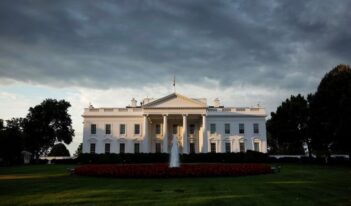
NHTSA’s analysis cannot support its conclusion that the benefits justify the costs.
In 2008, Congress passed the Cameron Gulbransen Kids Transportation Safety Act. The Act requires the National Highway Traffic Safety Administration (NHTSA) to “expand the required field of view to enable the driver of a motor vehicle to detect areas behind the motor vehicle to reduce death and injury resulting from backing incidents, particularly incidents involving small children and disabled persons.” The Secretary of Transportation has the authority to meet this standard through a variety of means, including by requiring additional mirrors, sensors, or cameras.
NHTSA spent several years researching various alternatives for reducing backover crashes, which kill almost 300 people annually. After some delay, the agency concluded that the most effective method for reducing backovers would be to require all new cars to have rear-view cameras installed prior to sale. As part of its analysis of the regulatory impacts, and to comply with Executive Orders 12866 and 13563, NHTSA performed a cost-benefit analysis. Interestingly, NHTSA concedes in this analysis that mandating rear-view cameras is not cost-effective. It also notes that the monetized costs of the policy would far exceed the monetized benefits.
How, then, does NHTSA defend its decision to mandate rear-view cameras? On the grounds that “the quantitative analysis does not offer a complete accounting” of the nonmonetary benefits. On this basis, the agency concluded that, although the monetized costs exceed the monetary benefits, the entire suite of regulatory benefits still “justify” the costs of the regulation.
NHTSA has presented its analysis of its rule to the White House Office of Information and Regulatory Affairs (OIRA), where it has remained under review past the February 29, 2012 deadline that Secretary of Transportation Ray LaHood initially set with Congress for promulgation of the final rule. LaHood has delayed the promulgation of the rule until later this year: under the agency’s new self-appointed deadline, the final rule will be promulgated by December 31, 2012.
Why the delay? LaHood’s explanation is generic; he claims that the agency needs the additional time for “further study and data analysis.”
A more intriguing explanation for the delay is that OIRA may be hesitant to permit NHTSA—or any agency—to rely on nonmonetary benefits to justify monetized expenditures. Agencies often include “nonquantifiable” effects of regulations in their cost-benefit analyses, leaving those effects unmonetized. Yet NHTSA’s analysis in the rear-view camera rule is distinctive because the agency explicitly relies upon these nonquantifiable effects to justify the monetary cost of the regulation.
It is true that the nonmonetary impacts of the rear-view camera rule are particularly grave. As the agency notes, of the 95 to 112 lives the regulation would save annually, 44 percent would be children under the age of five. And, because backover crashes often occur in home driveways, many of the children who die may be killed by a parent or caregiver. The tragedy of a parent accidentally killing a child is hard even to imagine, and—perhaps because the prospect is so dreadful—NHTSA refuses to attach a dollar figure to these impacts, saying that they “cannot be monetized.”
If the effects of a regulation truly cannot be monetized, should an agency be permitted to promulgate a costly regulation? At first blush, NHTSA’s argument that nonquantifiable benefits can justify monetized costs may seem plausible. But if we take seriously the claim that these benefits cannot be monetized, the agency’s argument cannot stand.
To see this, consider how regulators monetize benefits. The benefits in a regulatory cost-benefit analysis are calculated by reference to people’s willingness to pay money to secure those benefits. When monetized costs exceed monetized benefits, the costs of a regulation exceed what people are willing to pay for the effects of that regulation. Such a regulation should be barred by Executive Order 13563, which requires that the benefits of a regulation “justify” its costs.
The agency cannot sidestep this conclusion by reference to nonmonetizable benefits. Nonmonetizable benefits have a monetary value of $0—not because they are necessarily worthless in some larger sense, but because, by definition, any value they may have cannot be expressed in monetary terms. In other words, people are willing to pay $0 to secure a nonmonetizable benefit—otherwise the benefit would be monetizable.
With that understanding in mind, consider NHTSA’s argument. By NHTSA’s calculation, the rear-view camera rule would cost at least $11.8 million per life saved, but according to the agency people are willing to pay only $6.1 million per life saved. To “make up” for the difference here, the benefits the agency treats as nonmonetizable would have to justify an additional expenditure of $5.7 million per life saved. But the value of the nonmonetizable benefits—when expressed in dollars—is $0. This lack of monetary benefit cannot justify the additional expenditure.
Does this analysis mean that a decision to adopt the rear-camera rule cannot be justified in any way? No. A particularly hard wrinkle of this rule is that NHTSA has chosen to treat huge portions of the expected impacts of the regulation as completely nonmonetizable. While the agency has monetized the “value of a statistical life,” it has refused to monetize many of the other highly emotional effects of the regulation: that many life years are lost when children (rather than adults) are killed; that society may place a special value on protecting children; and that there is a “qualitatively distinct risk” of parents or caregivers accidentally killing their own children.
On the one hand, it is understandable how NHTSA came to treat these benefits as unquantifiable. It is true that money and children’s lives are incommensurable in important ways, such that the tragic effects NHTSA chronicles cannot be fully expressed in any amount of money. Still, people will pay money to prevent the effects from occurring, which makes the effects monetizable. Regulators routinely rely on willingness-to-pay studies to calculate other nonmonetary regulatory benefits; it makes no sense for NHTSA to refuse to do so here.
So long as people will pay some money to prevent any of the effects NHTSA identifies as unquantifiable, NHTSA has undercounted the monetizable benefits of the regulation. This problem is a serious one, both in NHTSA’s analysis and in other regulatory analyses that confuse monetizability and incommensurability. NHTSA should remedy the problem by using its extra time to revisit its monetization practices and to determine whether people are truly unwilling to pay enough money to justify saving the lives of a hundred people a year, almost half of whom are toddlers.
What should OIRA do in the meantime, when it is faced with rules like this one—where, at the same time that the monetized costs exceed the monetized benefits, there are also real reasons to question the thoroughness of the monetization? In these circumstances, where Congress does not provide additional guidance, OIRA should refuse to let the regulation through until the agency completes an adequate analysis. Even where—as here—the regulation seems clearly to undercount important benefits, thorough agency analyses should not be supplanted by even strong intuitions that many additional benefits may be monetizable. If additional benefits are monetizable, then they should be monetized by the originating agency. At that point, the regulation should move forward if—and only if—the monetized benefits justify the monetized costs.




